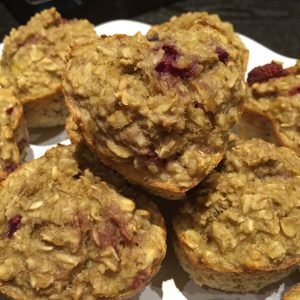SUPER FOODS! – Part 2
Reasons why you shouldn’t leave the grocery store without them!
“Faster than a speeding bullet, more powerful than a locomotive…LOOK!” On your grocery store shelves…SUPER FOODS!
Eggs – One large egg contains 113 mg of Choline, an essential nutrient for brain health. This super food is also high in Vitamin A, Vitamin D, potassium and protein. But not so fast, don’t discard the yolk! The yolk is the powerhouse of the egg and holds the majority of vitamins, minerals, and even protein. Worried about high cholesterol? Eat only 3 yolks per week, and you will still comply with a heart-healthy diet.

Photo credit: Egg Nutrition Center
Flax seed – As you have learned about chia seeds previously, flax seeds are also abundant in Omega-3 fatty acids. Two tablespoons of these tiny seeds contain only 75 calories and 3 grams of protein. Flax seeds are abundant in calcium (important for strong bones and teeth), magnesium (helps maintain muscle and nerve function), and manganese (required for the metabolism of carbohydrates, and proteins). This super food also is high in lignans, which are phytoestrogens that protect against cancer. Try rolling a banana in ground flax seed, adding ground or whole flax to pancake batter, or add it to your meatloaf recipe for increased nutrition.
Garlic – Allicin, the organic compound that gives garlic its unique scent, but also is the ultimate antioxidant. Allicin acts as an antibiotic and is believed to be equivalent to 15 standard units of penicillin. Not just delicious, but research has investigated the benefits of garlic on cardiovascular disease risk. Studies have found garlic significantly reduces blood pressure; however, additional clinical trials are necessary. Afraid of garlic breath? Fear not! Research in 2010 found drinking a glass of whole milk may help reduce odor when consuming garlic-containing foods.
Green tea – Green tea has protective properties against an array of diseases, such as, Alzheimer’s and other forms of dementia. A study published in the European Journal of Clinical Nutrition in 2006 found green tea to be an even healthier beverage of choice than water. Like water, green tea will rehydrate the body, but also offer provides anti-oxidative and anti-inflammatory protection. This “super drink” can be served either hot or cold as an after-school beverage. Caution must be taken with kids, however, green tea can contain more caffeine than black tea (24-40mg vs 14-61 mg/8oz). In both adults and kids, too much caffeine can cause nervousness, lack of concentration, difficulty sleeping, and other unpleasant side effects, and in young kids, it doesn’t take a lot of caffeine to produce these effects.
Lentils – Just 1/4 of a cup of these tasty legumes contains a rich source of fiber, protein, iron, and B vitamins. Eating legumes once per week may prevent heart disease and regulate blood sugar. Lentils can be easily incorporated into meals. Add lentils to chopped vegetables and brown rice for an easy dish; toss lentils with your favorite greens and chopped vegetables for a protein-filled salad. Check your produce section and look for pre-cooked lentils like these, which make preparation a breeze!
Nutritional yeast – Nutritional yeast is one of the newer super foods on the block; however it is one which should not be ignored. Nutritional yeast is actually deactivated yeast (strain of Saccharomyces cerevisiae) and can be found at most natural food stores. Nutritional yeast has a cheesy, nutty, and somewhat creamy texture and is used frequently as a cheese substitute. It is rich in B-vitamins, protein, folic acid, iron, magnesium, phosphorus, and an excellent source of Vitamin B12. Adding this dairy-free and gluten-free super food on top of any meal is a great way for children to obtain the many nutritional benefits, while adding flavor. Try nutritional yeast on top of popcorn or even stir it into mashed potatoes for a nutrient-packed treat.
Oats – One of FEED’s favorite foods to recommend is oats! Oats are high in fiber, particularly soluble fiber, which make them both a digestive aid, and a cholesterol-lowering component. In addition to other vitamins and minerals, one cup of cooked oats provides about 68% of the daily requirements of manganese. According to a recent study published in the Journal of Nutrition, oats contain unique antioxidants called avenanthramides. These antioxidants help to protect against free radical damage, in other words, may prevent cancer. Rather than preparing oats with water, choose skim milk or alternative dairy beverage, to provide a serving of calcium, with your whole grain oats. Serve oats with a variety of toppings such as nuts, dried or fresh fruit, and make oatmeal more fun for the whole family!

Want more tips on how to serve these or other SUPER FOODS? Contact FEED at www.feednutrition.com.
